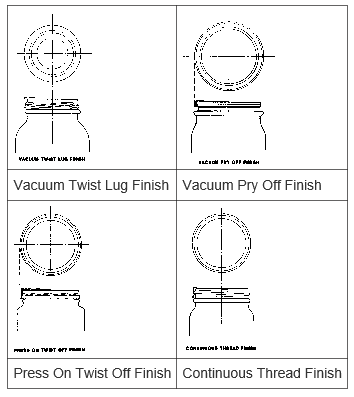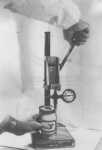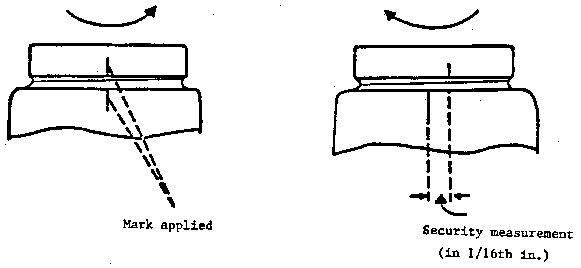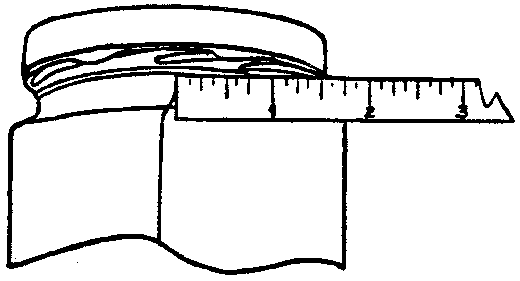BAM Chapter 22B: Examination of Glass Containers for Integrity
Bacteriological Analytical Manual (BAM) Main Page
January 2001
Authors: Rong C. Lin (ret.), Paul H. King (ret.), and Melvin R. Johnston (ret.)
For additional information, contact Steven Simpson
Almost all low-acid foods packaged in glass containers are sealed with vacuum-type closures. Currently 4 types of vacuum closures are widely used on low-acid food products: LT (lug-type twist) cap, PT (press-on twist-off) cap, pyr-off (side seal) cap, and CT (continuous thread) screw cap (Fig. 25). Packers' tests and examinations to ensure a reliable hermetic seal of containers are required by 21 CFR 113.60 (a) (2) and (3).
Figure 25. Types of vacuum closures and glass finishes.
-
Visual examination for closure and glass defects (for definition of terms, see the glossary section of this chapter)
cap tilt
crushed lug
chipped glass finish
cut-through
cocked cap
stripped cap
cracked glass finish - Seal integrity examination
-
Vacuum. Use standard open-closed type of vacuum gauge or USG No. 12118 gauge with both vacuum and pressure scales (Fig. 26). Wet rubber gasket on piercing device with water. Shake off excess water. Puncture closure, using piercing needle attached to vacuum gauge. Read and record vacuum in inches (0-30 inches), or pressure (0-15 psi).
Figure 26. Vacuum gauge for seal integrity examination.
-
Removal torque (cam-off) for PT or LT type closures (Fig. 27). Properly secure jar on torque meter. Ease closures off in smooth, continuous motion rather than rapid, jerking motion. Use one hand to twist cap counterclockwise to open cap from sealed jar while avoiding any downward pressure on cap. Record maximum torque in inch-pounds required to open cap.
Figure 27. Torque meter.
-
Security values (lug tension) on lug-type twist cap (Fig. 28). Make vertical line on cap and corresponding line on container wall with marking pen. Turn closure counterclockwise just until vacuum is broken. Reapply closure to container just until gasket compound touches glass finish and closure lug touches glass thread (or until closure is at 2 inch-pound reapplication torque to achieve uniformity for application). Measure and record, in 1/16 inch increments, distance in front of vertical lines that were made before opening. Security is considered positive if line on cap is to right of line on container, and negative if line on cap is to left of line on container.
Figure 28. Security measurement for lug type twist closure.
-
Pull-up (lug position) for lug-type twist cap (Fig. 29). Mark vertical neck ring seam on glass finish. Measure distance from this vertical line, in 1/16 inch increments, to leading edge of cap lug position nearest it. Record lug position measurements made on right side of vertical neck ring seam (as analyst looks at package) as positive (+) and those to left side of parting line as negative (-).
Figure 29. Pull-up lug position of LTD measurement.
-
Hypertext Source: Bacteriological Analytical Manual, 8th Edition, Revision A, 1998. Chapter 22.





